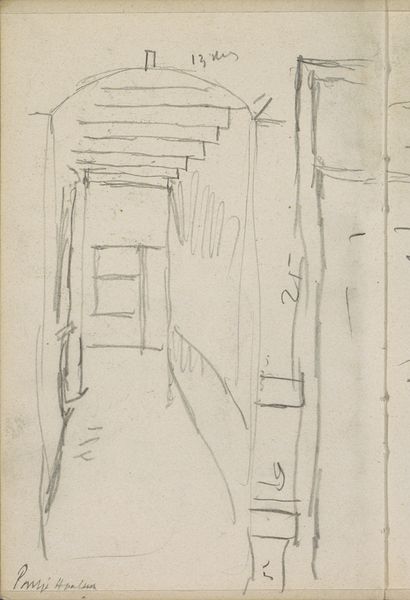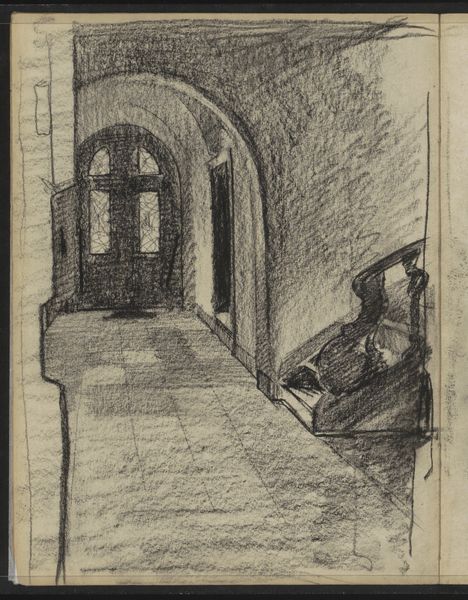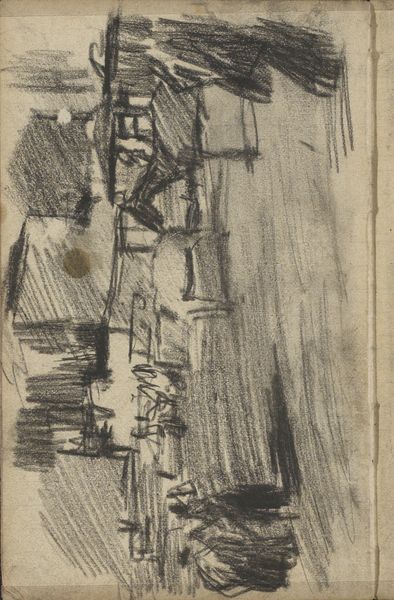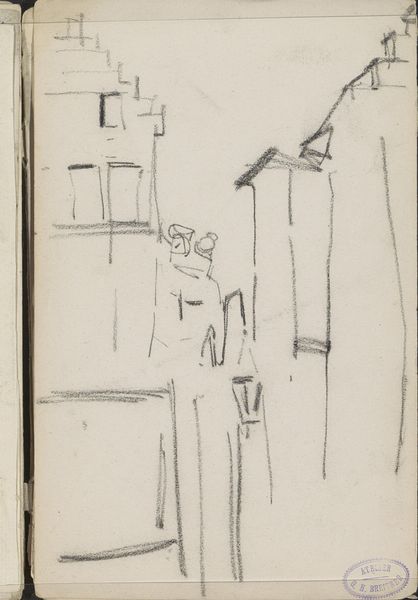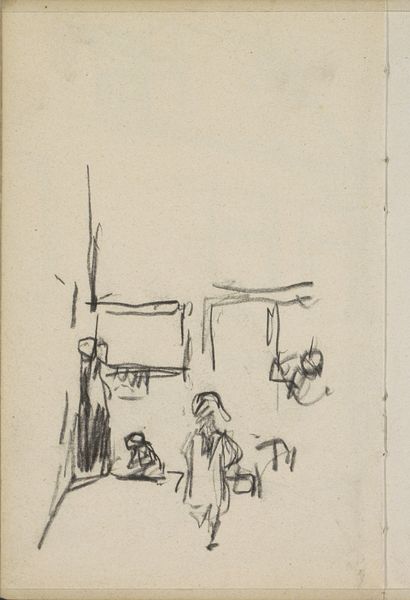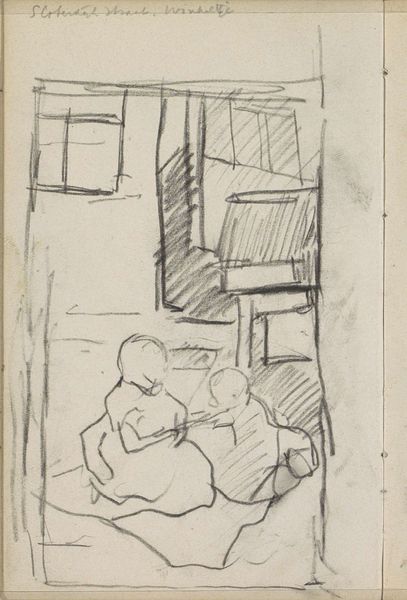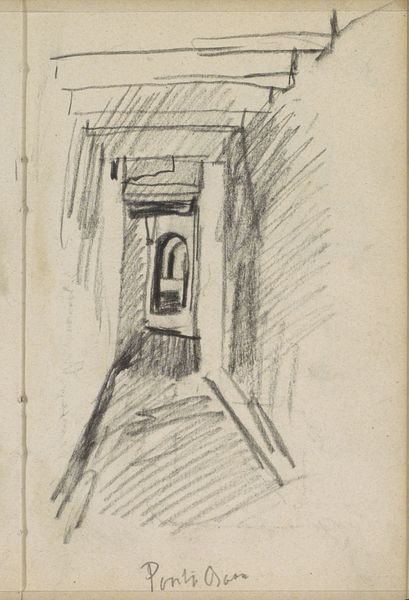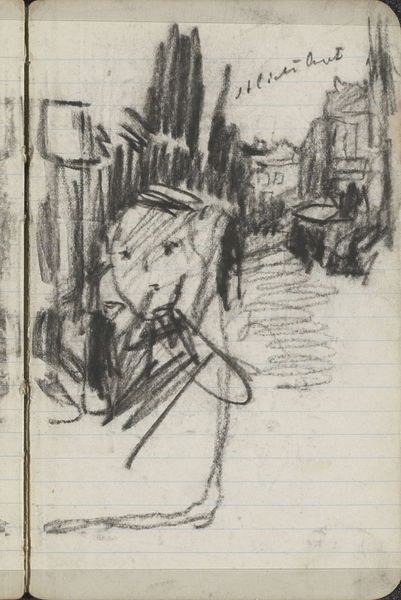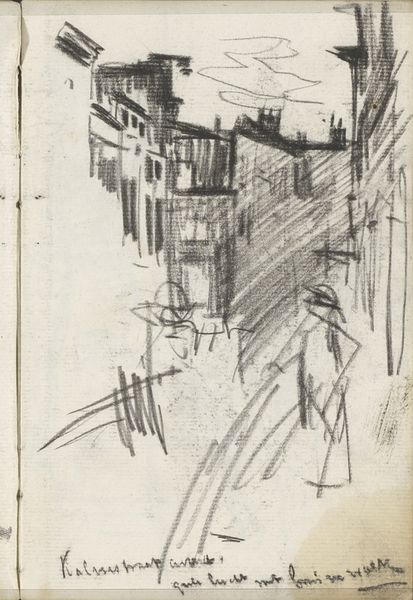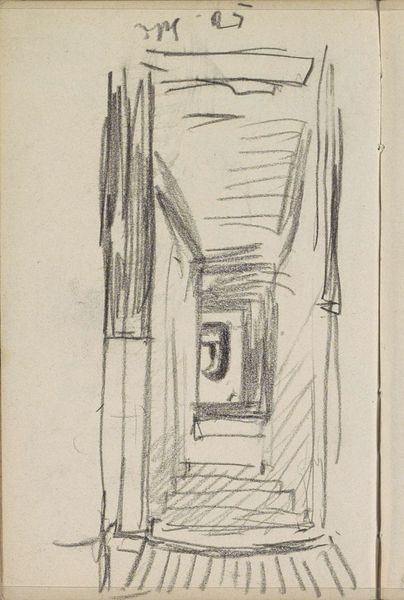
Copyright: Rijks Museum: Open Domain
Curator: George Hendrik Breitner's "Figuur in een steeg of doorgang," which translates to "Figure in an Alley or Passage," made sometime between 1880 and 1906. Editor: Immediately, the stark contrast pulls me in. The dark, heavy lines create this feeling of enclosure, almost claustrophobia. The texture practically screams off the page. Curator: Breitner was really exploring the grittier sides of city life during that period. Alleyways weren't just physical spaces, they became metaphors. Did they symbolize the anxieties about modernization and anonymity, that urban alienation that so many felt at the time? Editor: Definitely. And the quick, sketchy quality. I can imagine Breitner quickly blocking this out, grabbing a fleeting moment. What’s fascinating is the physical action of this capturing something and getting it down, it is rendered with graphite, crayon, and pencil on paper. How the relatively cheap and easily accessible materials let the process happen so fast. Curator: It's true, those readily available materials served his impulse. But beyond the fleeting moment, there's also this weightiness in the figure itself. It’s hunched over, shrouded. Editor: Or is it that the material almost mimics shadow or gloom? We read darkness, but it's literally pencil lead on a fibrous surface! It gives it a real tangibility; the dark figure blends into the darker space. Is it trying to get through, or be consumed? Curator: An excellent question. And think about the use of alleys historically. They could be escape routes, clandestine meeting places, but also, the only space where the poorest urban populations were living. The figure, rendered so minimally, becomes an every-person. Editor: The sketch’s roughness itself carries meaning too, a quick notation for the record, reflecting his modern reality as it happens around him. Curator: Precisely, Breitner doesn't give us answers; he presents observations of a rapidly changing world through this fascinating lens of the overlooked and seemingly insignificant. Editor: Ultimately, what strikes me is how a simple drawing process becomes infused with atmosphere and social narrative. A compelling demonstration of material speaking for culture.
Comments
No comments
Be the first to comment and join the conversation on the ultimate creative platform.

